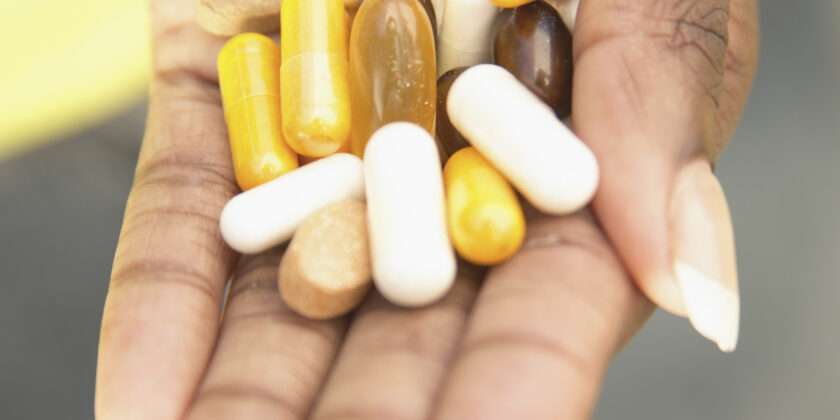Taking drug medications today is a difficult task. Following the directions on a drug information sheet is hard enough. You have to be aware of Adverse Drug Reactions(1) (Side Effects), and Drug to Drug Interactions(2). Unfortunately, Jay Harold has to add medications that can cause Drug-Induced Lupus to your list.
Drug-induced lupus (DILE) erythematosus(3) is an autoimmune disorder(4) that is brought on by a reaction to a drug medication. This means your body attacks healthy tissue by mistake. An estimated 15,000 to 20,000 individuals(5) each year are affected by DILE. Drug-induced lupus accounts for 10% of Systemic Lupus Erythematosus (SLE) cases.
DILE affects men and women equally and the onset is usually abrupt. DILE affects people over 50 years most commonly, and the symptoms are generally mild. Systemic Lupus Erythematosus (SLE) affects women at rate that is nine times higher than men. The typical SLE patient is between 20 and 40 years old. The symptoms of SLE are mild to severe.
Drugs known to cause Drug-Induced Lupus
Dr. Robert L. Rubin (6)states that lupus-inducing drugs are typically those used to treat chronic diseases, no obvious common denominator links the drugs, although the clinical features and laboratory abnormalities in lupus induced by most drugs are remarkably similar. The list includes medicines to treat heart disease, thyroid disease, hypertension, and neuropsychiatric disorders. Some anti-inflammatory agents and antibiotics are on this list, as well as biologics used intravenously to treat rheumatic diseases.
Four of the most common medicines known to cause drug-induced lupus erythematosus are
- Isoniazid(7) is used alone or with other drugs to treat tuberculosis (TB).
- Hydralazine(8) is used to treat high blood pressure.
- Procainamide(9) is used to treat abnormal heart rhythms.
- Quinidine(10) is used to treat abnormal heart rhythms.
Symptoms(11) of Drug-Induced Lupus may include:
- Blurred vision
- Fever
- General ill feeling (malaise)
- Joint pain
- Joint swelling
- Loss of appetite
- Pleuritic chest pain ( inflammation of the lining of the lungs and chest)
- Skin rash that gets worse with sunlight. (It may appear as a “butterfly” rash across bridge of nose and cheeks.)
Treatment Options for DILE
Most of the time, symptoms go away within several days to weeks after stopping the medicine that caused the condition according to MedlinePlus.
Treatment may include:
- Nonsteroidal anti-inflammatory drugs (NSAIDs) to treat arthritis and pleurisy
- Corticosteroid creams to treat skin rashes
- Antimalarial drugs (hydroxychloroquine) to treat skin and arthritis symptoms
If the condition is affecting your heart, kidney, or nervous system, you may be prescribed high doses of corticosteroids (prednisone, methylprednisolone) and immune system suppressants (azathioprine or cyclophosphamide). This is rare.
When the disease is active, you should wear protective clothing and sunglasses to guard against too much sun.
Most of the time, drug-induced lupus erythematosus is not as severe as SLE. The symptoms often go away within a few days to weeks after stopping the medicine you were taking. Rarely, kidney inflammation (nephritis) can develop with drug-induced lupus caused by TNF inhibitors(12)(blockers).
Tumor Necrosis Factor (TNF) blockers suppress the immune system by blocking the activity of TNF, a substance in the body that can cause inflammation and lead to immune-system diseases, such as Crohn’s disease, ulcerative colitis, rheumatoid arthritis, ankylosing spondylitis, psoriatic arthritis and plaque psoriasis. The drugs in this class include Remicade (infliximab), Enbrel (etanercept), Humira (adalimumab), Cimzia (certolizumab pegol) and Simponi (golimumab).
Nephritis may require treatment with prednisone and immunosuppressive medicines.
Jay Harold is always looking for ways to improve your health. DILE isn’t discussed much, but you need to aware of this potentially devastating condition.
Click this link to get free Health and Wealth information to improve your life. Play the free “Slow Roll Through Civil Rights” Game found on the Jay Harold website. Enjoyed this post? Share it and read more here.
Bibliography
- https://jay-harold.com/drug-side-effects-are-a-health-issue/
- https://www.nlm.nih.gov/medlineplus/drugreactions.html
- https://www.nlm.nih.gov/medlineplus/ency/article/000446.htm
- https://www.nlm.nih.gov/medlineplus/ency/article/000816.htm
- http://www.pharmacytimes.com/publications/issue/2016/January2016/Drug-Induced-Autoimmune-Diseases
- http://www.lupus.org/answers/entry/which-medications-cause-drug-induced-lupus
- https://www.nlm.nih.gov/medlineplus/druginfo/meds/a682401.html
- https://www.nlm.nih.gov/medlineplus/druginfo/meds/a682246.html
- https://www.nlm.nih.gov/medlineplus/druginfo/meds/a682398.html
- https://www.nlm.nih.gov/medlineplus/druginfo/meds/a682396.html
- https://www.nlm.nih.gov/medlineplus/ency/article/000446.htm
- http://www.fda.gov/Drugs/DrugSafety/PostmarketDrugSafetyInformationforPatientsandProviders/ucm109340.htm





